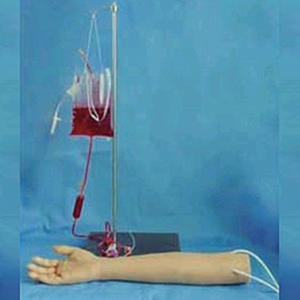21-11-2024
ADA MED SUPPLY LIMITED
Article tag: Children's venipunction model Venipuncture model
In pediatric medical care, venipentesis is a vital skill, which is directly related to the treatment effect and comfort of children. However, due to the particularity of pediatric patients, such as small blood vessels, easy movement, fear, etc., venipuncture becomes a very challenging task. In order to improve the venipuncture skills of pediatric nursing staff, children venipuncture model came into being and became their effective assistant in training and upgrading.
The children's venipuncture model simulates the skin, blood vessels and muscle structures of real children. The blood vessels on the model are clearly visible, and have certain elasticity and toughness, which can simulate the feel and feedback during real puncture. This design enables the nursing staff to more intuitively understand the characteristics of children's blood vessels during practice, master the correct puncture skills and strength, and reduce the mistakes caused by lack of experience in actual operation.

In addition to high degree of imitation, it has a variety of functions. For example, the model can simulate different puncture scenarios, such as scalp venipuncture, hand venipuncture, etc., allowing caregivers to practice in a variety of situations. At the same time, the model can also simulate different reactions of children, such as crying, struggling, etc., to help nurses learn how to stay calm in complex situations and accurately complete the puncture operation.
In pediatric nursing education, children venipunction model plays an irreplaceable role. Through model training, students can more intuitively understand the process and skills of venipuncture, reducing the fear and tension in the actual operation. At the same time, model training can also improve students' practical ability and adaptability, and lay a solid foundation for their future career.
In addition, it promotes the innovation and progress of pediatric nursing technology. Through continuous practice and feedback, nursing staff can constantly summarize experience, optimize puncture techniques, and improve the success rate of puncture. At the same time, the model can also be used as a test platform for new technologies and new methods to provide strong support for the innovation and development of pediatric nursing technology.
To sum up, as a helpful assistant in the field of pediatric nursing, the children's venipuncturing model not only improves the nursing staff's venipuncturing skills, but also promotes the innovation and development of pediatric nursing technology.